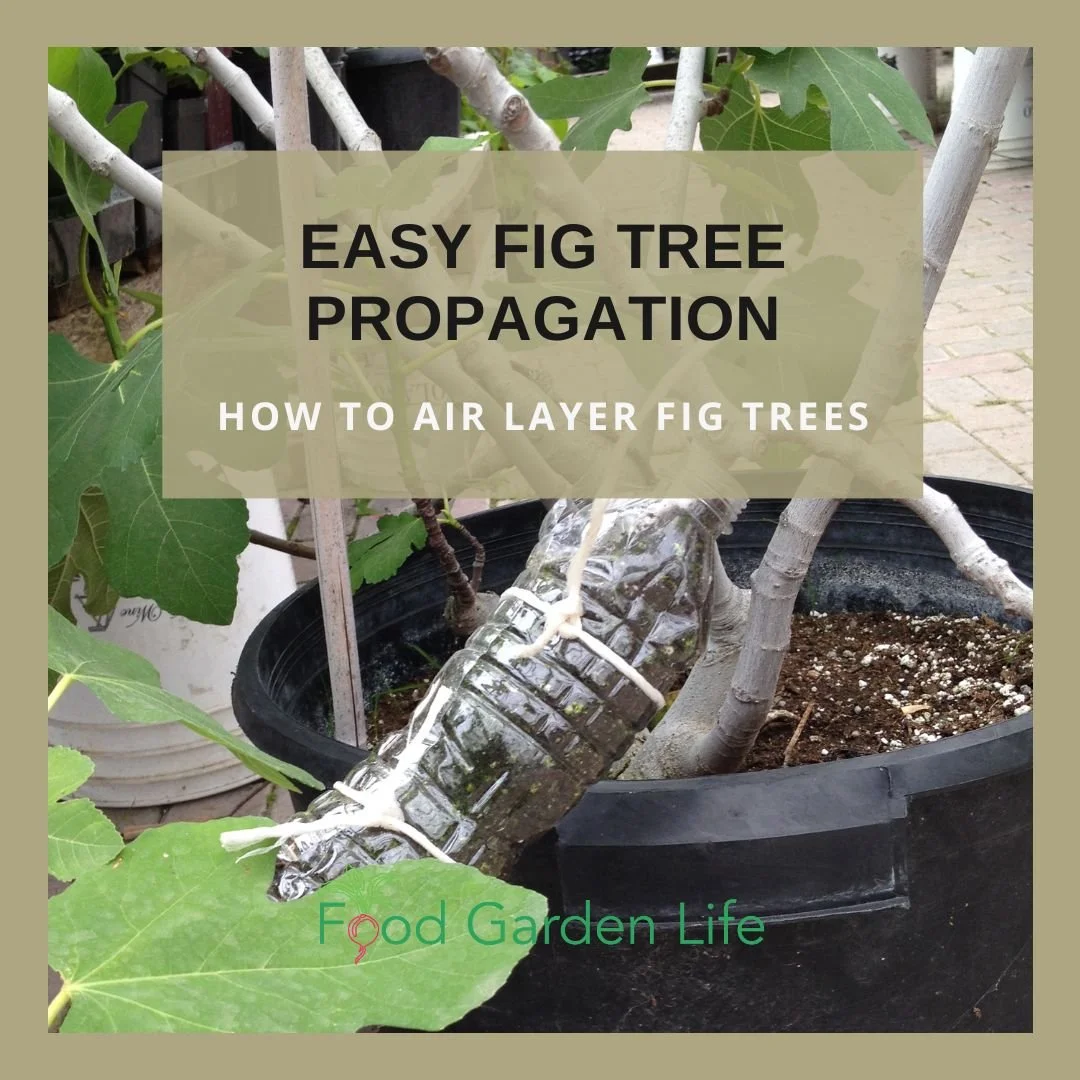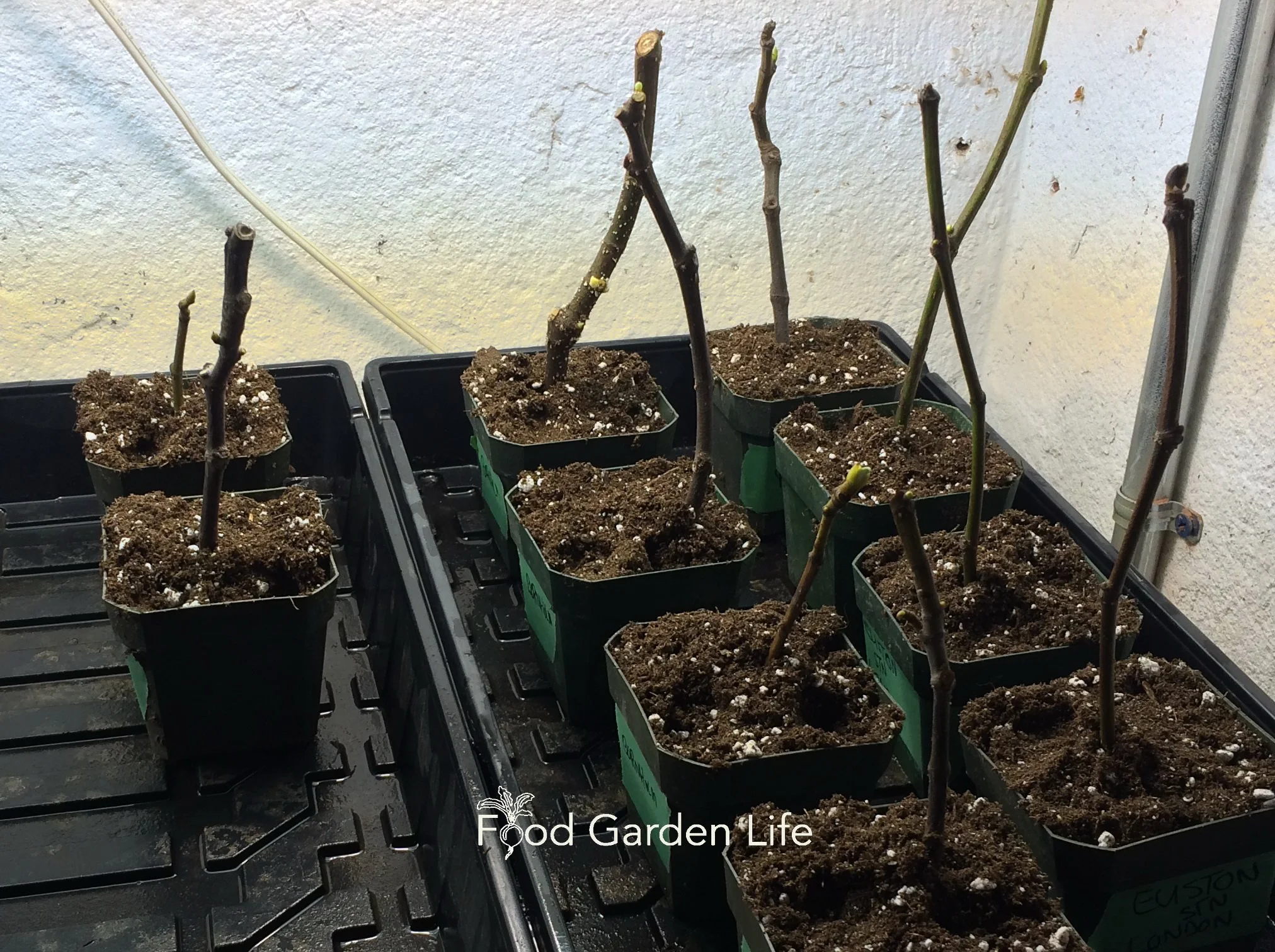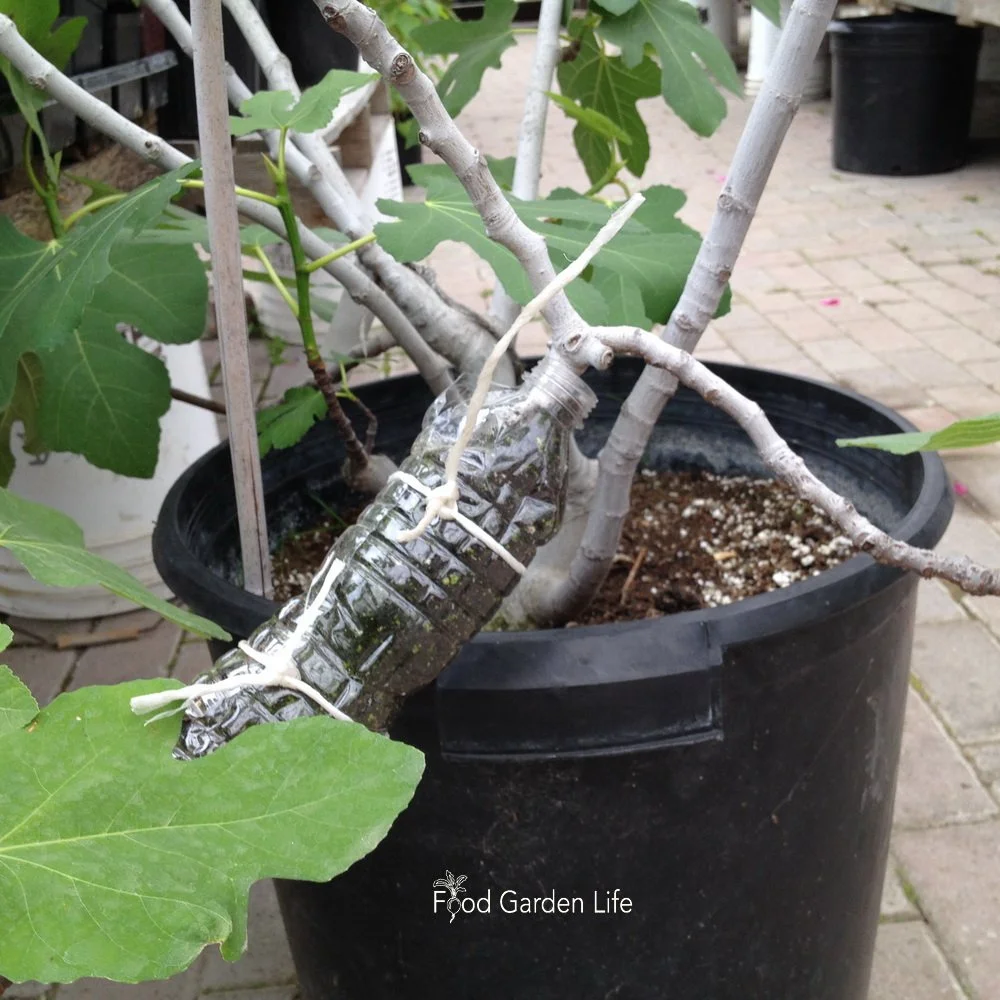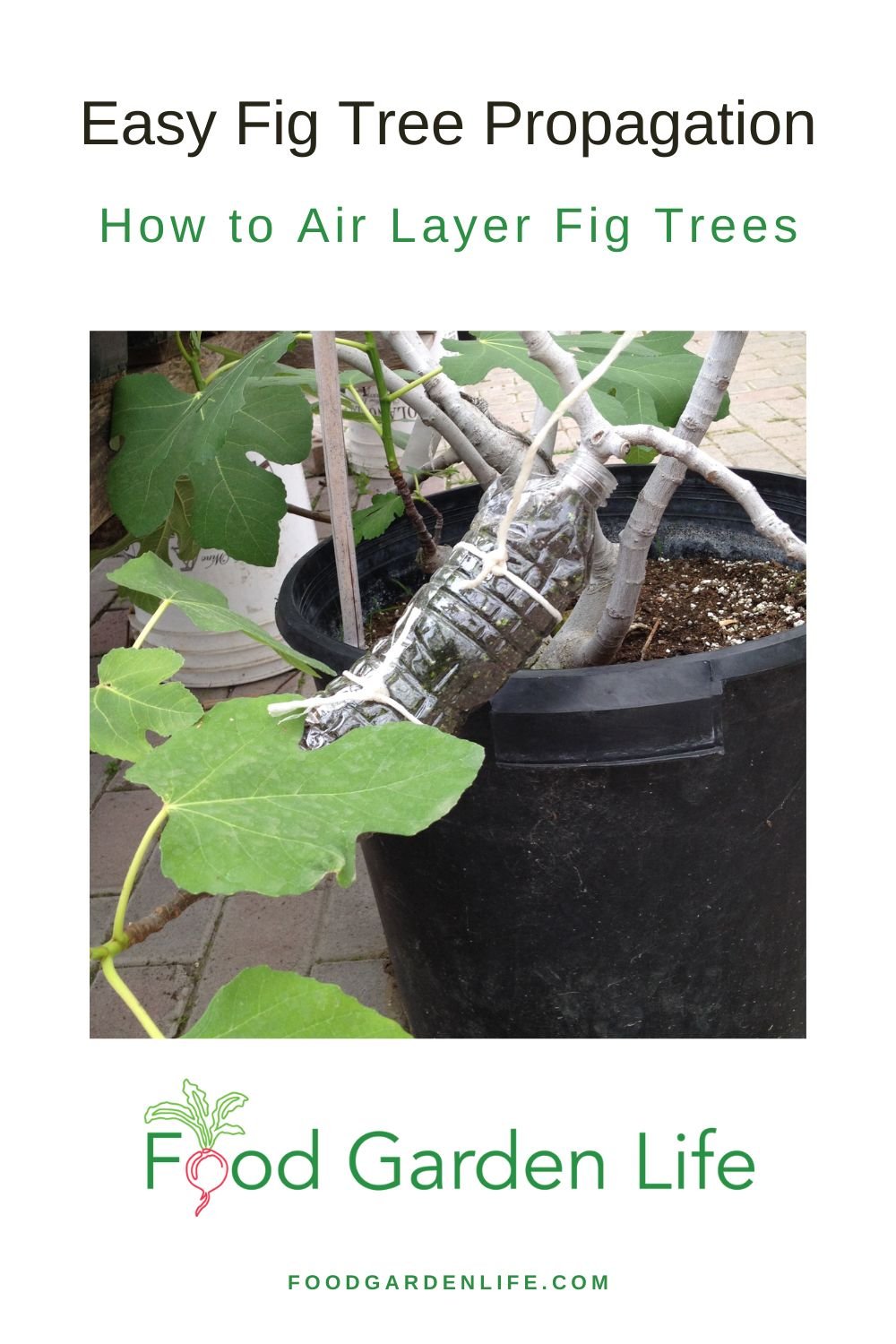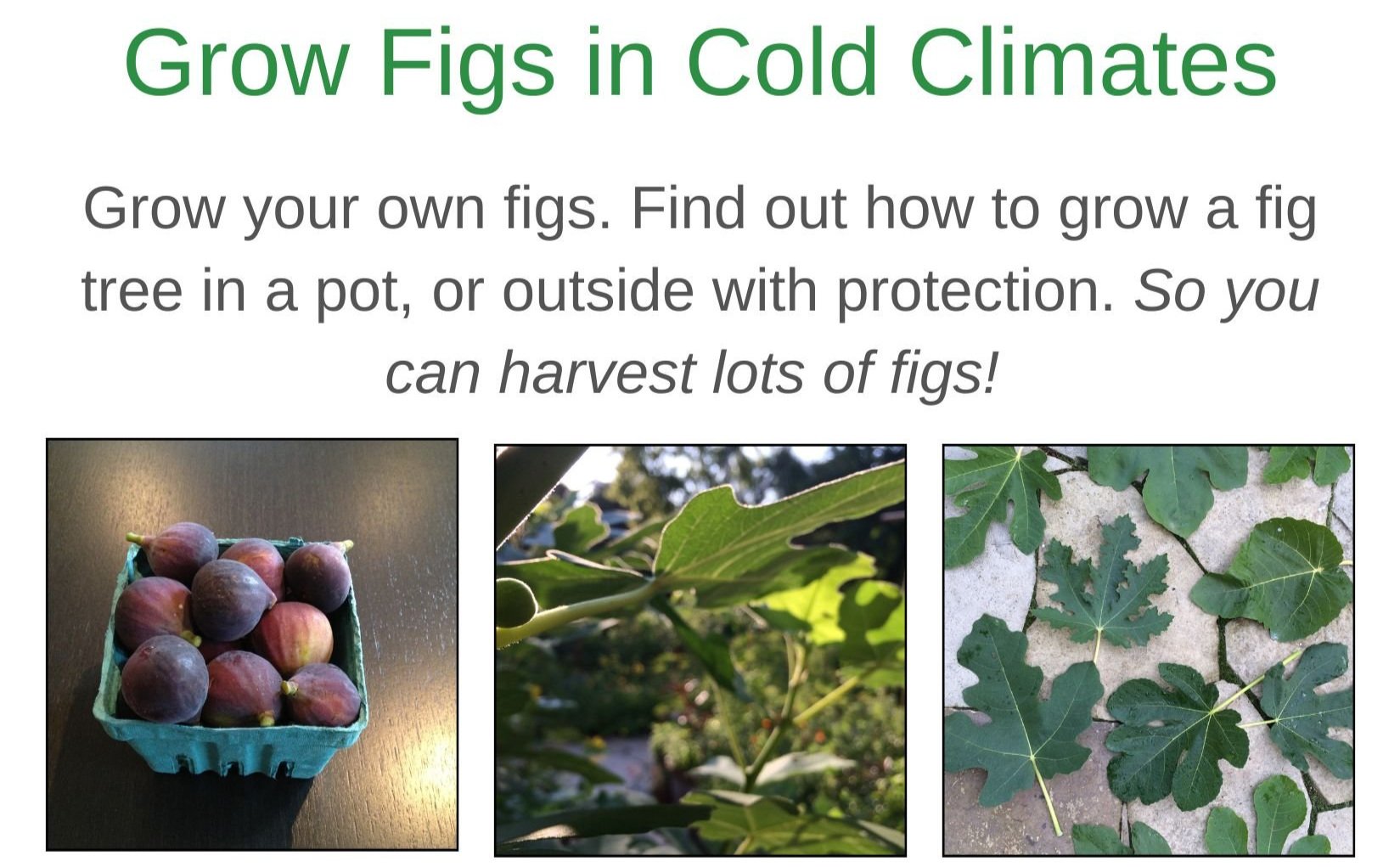By Steven Biggs
Propagating Fig Trees Made Easy
Don’t have time to coddle your fig cuttings? Want a simple way to propagate a fig tree?
Try air layering fig trees.
It’s a simple, hands-off way for home gardeners to propagate fig trees.
Keep reading to find out how to air layer a fig tree, and what supplies you do (and don’t) need.
What is Air Layering?
Air layering is when we coax roots to grow from a branch that’s still attached to a plant.
The roots grow where we wrap the branch with a moist covering. Think of a tree-sized bandage with extra thick and moist padding underneath.
Air layering works for many types of plants. It is particularly easy with figs because figs root easily.
(There’s also what simply called “layering,” which refers to taking a low-lying branch and bending it down into contact with the soil.)
Why Air Layer?
Rooting cuttings is a good way to make lots of fig plants, but fig cuttings need regular attention.
On a commercial scale, propagating fig trees is usually done with cuttings. That’s because:
You can make more trees from a limited amount of wood
It doesn’t take as much space
Cuttings are also a useful way to share fig varieties: Little branch bits are easy to send by mail, so you can swap fig varieties with other fig growers.
But cuttings need regular attention.
So if you’re looking for a foolproof fig propagation method that doesn’t need regular monitoring, air layering is an excellent option.
(You can also use air layering to reshape an older tree, see below.)
When to Air Layer
Start air layering fig trees in the spring or early summer, when the fig tree is actively growing. It can take 6-8 weeks for a branch to root, so an early start means you can detach your newly rooted fig plant in late summer, and then pot it up before the fig tree goes dormant in the fall.
If you start an air layer later in the summer, it might not be ready to cut off and pot up before fall. It’s not the end of the world if it’s not ready to cut off…but any tender little roots that have started forming are fragile, so there’s more chance of them being damaged if they’re still bandaged up for the winter. (The temperature in the air layer will swing back and forth more quickly than the soil in a pot or the ground.)
Branches to Air Layer
You’ll get the fastest root growth on year-old branches. (Branches from the previous year that are a bit woody).
Older branches will root too, but it can take a bit longer.
Don’t use green growth from the current year—it’s more likely to rot.
Supplies: What You Need to Air Layer a Fig Tree
A fig air layer made using a clear plastic water bottle, twine, and potting soil.
Rooting Medium – The Filling to Go Inside the Bandage
Pack the inside of the bandage with something that holds moisture and is loose enough to allow roots to grow. Moistened sphagnum moss, coir, and potting soil all work well.
The rooting medium should be moist—but not sopping wet.
The Covering
The rooting medium is held in place by a covering (the bandage!)
Here are ideas:
Sandwich bag
Water bottle split lengthwise
Plastic cling wrap
Be creative, there are lots of other things you can use.
(There are even purpose-made gizmos for air layering, but they cost an arm and a leg.)
Healthy fig roots visible in this purpose made gadget for air layering.
Fastener
Next you need something to hold the covering in place.
Depending on the covering you’ve chosen, you might use twine, zip ties, or electrical tape. (I like electrical tape because it’s stretchy, so you can pull it tight, and it holds up well outdoors.)
Optional
Many people use rooting hormone when air layering.
Rooting hormone can speed up root development. For some types of plants rooting hormone is a must…but frankly, for figs, don’t waste your money. They root well without it.
Find Out How to Grow Your Own Figs
Harvest more figs this year! Grow Figs in Cold Climates Masterclass shows you how to grow a fig tree in a pot, or outside with protection. So you can harvest lots of figs!
Air Layering Steps
Choose a straight branch to air layer. The wrapping is easier on a straight branch.
Choose where on the branch to make the air layer. It should be on year-old wood—not green growth from the current year.
Remove leaves that will be in the way of the air layer.
Remove figs above the air layer. (Seems a pity…but this branch has a higher purpose—a new fig tree!)
Position your covering, and fill it with rooting medium.
Now close it up tightly with your fastener so that the medium stays moist. (You don’t want to have to open up the covering to re-moisten the medium).
Do a few air layers at once! The more fig trees the better…then you can share with friends!
Do a few air layers at once! The more fig trees the better…then you can share with friends!
Air Layering Optional Steps
Wounding and applying rooting hormone are two optional steps when air layering a fig. They are both traditional air layering steps that can help to stimulate root formation.
But I skip both of steps with figs.
That’s because fig branches are like chia pets waiting to sprout. Once you give them the right conditions, there’s no holding back the roots.
Wound the Branch - Optional
Creating a wound at the site of an air layer is a common practice that, for some plants, is very helpful in stimulating root growth.
Here are a couple ways to wound a branch for air layering.
Slanting cut. A common step is to make an inch-long upwards-slanting cut—a slightly angled cut towards the tip of the branch. It’s a bit like a tongue. The cut is often held open with something small, such as a toothpick.
Girdle. Another variation on wounding is simply to girdle the branch.
Apply Rooting Hormone - Optional
Rooting hormone is often used along with the wounding techniques above.
How to Know Air Layering is Complete
If you’re using a clear plastic bottle, clear bag, or other clear materials as your covering, you can watch the fig roots develop.
When your fig air layer is well rooted (meaning that the medium has a nice spaghetti-like jumble of roots) you can cut off the rooted air layer from the branch.
How to Remove an Air Layer
Just cut off the branch below the air layer.
Remove the covering, and pot up your new fig plant.
Under good growing conditions, fig air layers started in early summer take 6-8 weeks until they’ve grown enough roots to snip off and become stand-alone plants.
What to do Next…
Your newly air-layered fig tree has roots…but you’ve just stressed it by cutting it from the parent plant.
So grow it in a shaded location for a couple of weeks.
FAQ: Air Layer Figs
Pin this post!
What about larger branches?
In addition to air layering year-old branches, you can air layer older wood too. Young wood tends to root faster than older wood—so it might take a bit longer.
The bigger the branch, the bigger the bandage. But it can be worth the effort, especially if you’re looking to reshape a larger tree, and don’t want to waste the big branches. With air layering, you can root them before cutting them off!
Here’s an idea: I’ve seen multi-stemmed fig bushes air layered near ground level. There’s no need to fasten anything to the stem if you make the air layer just above ground level, by placing a pot filled with potting soil around the stem. Cut the bottom out of the pot, and then slit it lengthwise so that you can just wrap the pot around the stem. (Black nursery pots are easier to cut than smaller, thick-walled pots.) Then fill with potting soil and keep well watered.
Why is my air layer taking so long?
Roots form faster in warmer weather, when tree is actively growing. Younger wood roots more quickly than older wood.
Do you need to water an air layer?
If the moistened potting soil is fully covered, and the covering is fastened tightly, it will probably stay moist until it's time to remove it.
Find This Helpful?
If we’ve helped in your food-gardening journey, we’re always glad of support. You can high-five us below! Any amount welcome!
More on Propagating Fig Trees
More on Growing Figs in Cold Climates
Articles: How to Grow Fig Trees
Head to the Growing Figs Home Page for articles, interviews, and guides on how to grow figs in cold climates.
Books: Growing Figs in Cold Climates
Course: Growing Figs in Cold Climates
The self-paced online fig masterclass gives you everything you need to know to grow and harvest your own figs in a cold climate!
(We also run it live once a year. If you’re interested in knowing when we next run the live online fig “camp” I’ll announce it in my newsletter. Hop on the newsletter list here..)

